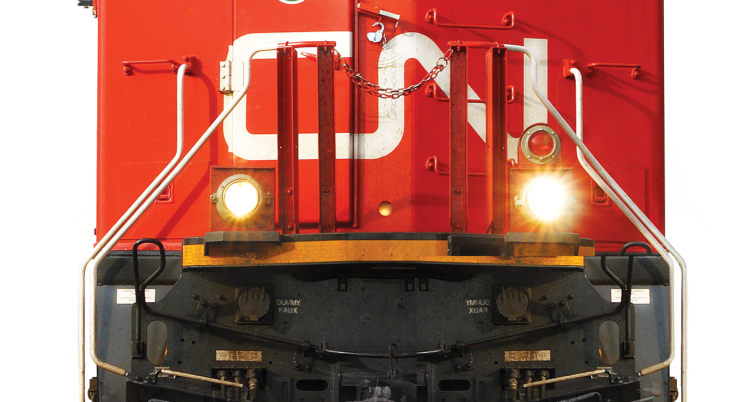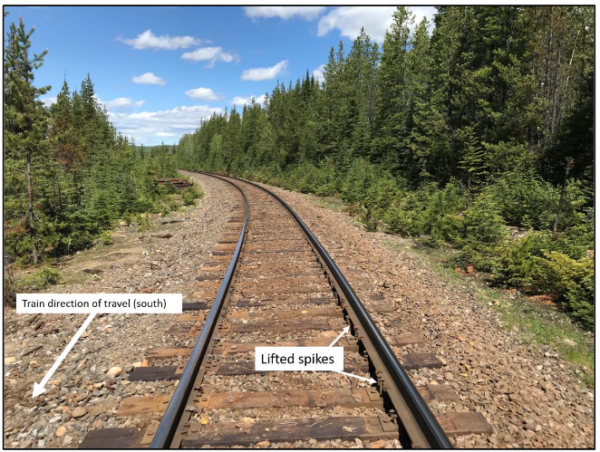TSB of Canada reports on Canadian National mainline derailment
Written by David C. Lester, Editor-in-Chief
The Transportation Safety Board of Canada, that country's equivalent of the U.S. National Transportation Safety Board, issued a report on a Canadian National main line derailment that occurred on June 3, 2021.
The CN derailment occurred at 9:15 a.m. (PDT) on June 3, 2021. The freight train was traveling south at 29 mph on the Chetwynd Subdivision in eastern British Columbia, about 85 miles north of Prince George when it derailed. At the time of derailment, the engineer made a train-initiated emergency brake application, stopping the train. Thirty-eight cars had derailed upright, but no hazardous materials were released, there was not a fire, and no injuries were reported.
The track was most recently inspected by a heavy track geometry test car on May 25. The inspection revealed a “near-urgent” outward rail cant on the low rail at milepost 547.7, in an 8° curve.

Near-urgent defects must be inspected within 72 hours of discovery and repaired within 30 days. The TSB report notes “The near-urgent condition was inspected the following day, May 26. During this inspection, no track geometry defects were identified; however, it is likely that signs of gauge widening (such as sliding tie plates, bent spikes or plate cutting) were present, but not observed. There were no repairs made or additional operating restrictions put in place to address this defect before the derailment. The last regular track inspection prior to the derailment was conducted on June 2, 2021.”
The safety message of the report is: “Nine days prior to this occurrence, a near urgent defect was identified, but the subsequent track inspection did not reveal track geometry defects, even though signs of gauge widening were likely present. When conducting track inspections in curves, it is important to pay particular attention to both rails for signs of instability, so that repairs or operating restrictions can be put in place.”
You can read the entire TSB report here.





